Summary Overview
E-commerce Logistics Services Market Overview
The global e-commerce logistics services market is experiencing significant growth, driven by the surge in online shopping and the increasing demand for fast, reliable, and cost-effective delivery services. This market includes various service providers offering last-mile delivery, warehousing, inventory management, and fulfilment solutions. Our report offers an in-depth analysis of procurement trends, focusing on cost optimization strategies and the integration of digital tools to streamline logistics and supply chain operations.
Key future challenges in e-commerce logistics services procurement include managing fluctuating shipping costs, meeting customer expectations for fast delivery times, and adapting to evolving consumer preferences. Leveraging digital tools and strategic sourcing will be crucial for optimizing the logistics supply chain and ensuring long-term competitiveness. As demand continues to grow, companies are utilizing market intelligence to improve operational efficiency and mitigate risks.
The e-commerce logistics services market is expected to maintain steady growth through 2032, with key highlights including:
-
Market Size: The global e-commerce logistics services market is projected to reach USD 1,903.08 billion by 2032, growing at a CAGR of approximately 20.04% from 2024 to 2032.
Growth Rate: 20.04%
-
Sector Contributions: Growth in the market is driven by: -
Rising E-commerce Demand: Increased online shopping driving a surge in logistics and fulfilment requirements. -
Last-Mile Delivery Innovations: Advancements in last-mile delivery solutions, such as drone and autonomous vehicle delivery systems, are enhancing speed and reducing costs. -
Warehouse Automation: The adoption of robotic systems and automated warehouses is improving efficiency in order fulfilment and inventory management. -
Automation and AI Integration: The use of AI for route optimization, demand forecasting, and inventory management is enhancing operational efficiency in e-commerce logistics. -
Robust Tracking Systems: Real-time tracking of parcels, inventory, and shipments is improving transparency and customer satisfaction. -
Investment Initiatives: Companies are investing in cutting-edge technologies such as automated sorting systems, AI-driven logistics management platforms, and sustainable packaging to drive growth and improve service delivery. -
Regional Insights: Asia-Pacific & North America remain key regions for e-commerce logistics services, with strong infrastructure, a growing customer base, and increasing adoption of automation technologies.
Key Trends and Sustainability Outlook:
-
Digital Integration: Automation in logistics operations, such as order processing and fulfillment, is reducing errors and boosting efficiency. -
Sustainability Focus: There is a growing demand for eco-friendly packaging and carbon-neutral delivery options to meet regulatory and consumer expectations for sustainability. -
Customer-Centric Delivery Models: As customer expectations rise, companies are adopting flexible delivery schedules and more personalized solutions, such as same-day or next-day delivery services. -
Data-Driven Logistics: Big data analytics is being used to optimize shipping routes, forecast demand, and enhance customer experience.
Growth Drivers:
-
E-commerce Sector Expansion: The growing volume of online sales is driving demand for efficient logistics services. -
Customer Experience Expectations: Increasing demand for faster, more reliable, and more transparent delivery options. -
Sustainability Goals: The pressure to adopt environmentally friendly practices is shaping the logistics services landscape, with many providers focusing on sustainable delivery methods and packaging. -
Technological Advancements: Adoption of new technologies, such as automation, AI, and IoT, is improving logistics efficiency and helping companies stay competitive.
Overview of Market Intelligence Services for E-commerce Logistics Services:
Recent analyses have identified key challenges such as rising shipping costs, changing consumer expectations, and fluctuating demand. Market intelligence services provide actionable insights that help companies optimize their logistics procurement strategies, identify cost-saving opportunities, and enhance supply chain resilience. These insights also support companies in complying with regulations and maintaining high standards of service while managing costs effectively.
Procurement Intelligence for E-commerce Logistics Services: Category Management and Strategic Sourcing:
To stay competitive in the e-commerce logistics services market, companies are streamlining their procurement processes using spend analysis and supplier performance tracking. Effective category management and strategic sourcing are essential for reducing procurement costs and ensuring consistent, high-quality service delivery. By leveraging market intelligence, businesses can refine their procurement strategies and negotiate favourable terms for logistics services, ensuring timely delivery and customer satisfaction while optimizing costs.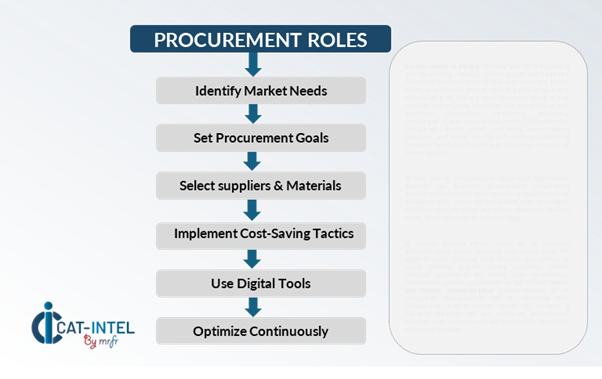
Pricing Outlook for E-commerce Logistics Services: Spend Analysis
The pricing outlook for e-commerce logistics services is expected to remain dynamic, influenced by various factors that affect both operational and service delivery costs. Key drivers of pricing trends include fluctuations in fuel and transportation expenses, labor costs, technological advancements in automation, and increasing demands for faster delivery times. Additionally, the rising need for sustainable packaging solutions and carbon-neutral delivery services is contributing to cost pressures.
Graph shows general upward trend pricing for E Commerce Logistics Services and growing demand. However, there may be fluctuations influenced by economic conditions, technological advancements, and competitive dynamic.
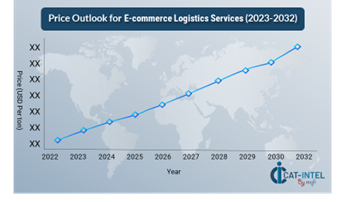
Efforts to optimize procurement processes, improve supplier relationships, and adopt advanced technology solutions are crucial for managing costs effectively. Leveraging digital tools for real-time monitoring, route optimization, and inventory management can further enhance cost efficiency.
Partnering with reliable logistics service providers, negotiating long-term contracts, and streamlining operational workflows are essential strategies to maintain cost control in the e-commerce logistics sector. Despite these challenges, maintaining high service standards, reducing delivery times, and investing in automation will be key to sustaining profitability.
Cost Breakdown for E-commerce Logistics Services: Total Cost of Ownership (TCO) and Cost-Saving Opportunities
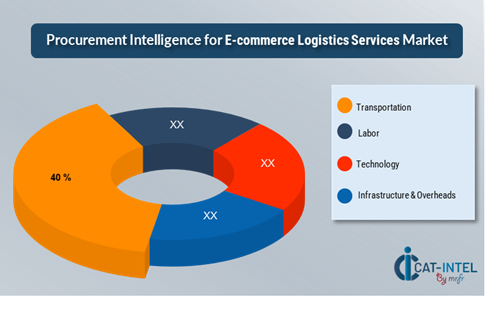
-
Transportation (40%)-
Description: The largest cost in e-commerce logistics services comes from transportation, including fuel, vehicle maintenance, and driver salaries. Shipping costs are also influenced by fluctuating fuel prices and distance travelled for last-mile delivery. -
Trends: The adoption of electric vehicles (EVs) and autonomous delivery systems is helping companies reduce fuel costs and enhance delivery efficiency. Companies are also exploring alternative shipping methods such as drones to minimize last-mile costs.
-
- Labor (XX%)
- Technology (XX%)
- Infrastructure & Overheads (XX%)
Cost-Saving Opportunities: Negotiation Levers and Purchasing Negotiation Strategies
In the e-commerce logistics services industry, optimizing procurement processes and utilizing effective negotiation tactics can drive significant cost savings while enhancing service efficiency. Key strategies for achieving cost reductions include establishing long-term partnerships with logistics service providers, particularly in strategic regions, to secure better pricing, volume discounts, and more favorable terms for shipping and delivery.
Negotiation levers such as bulk purchasing, consolidating shipments, and securing forward contracts can help mitigate the effects of fluctuating transportation costs and supply chain disruptions. Companies can also negotiate for flexible delivery schedules or volume-based pricing that supports both operational needs and cost control.
Working with logistics providers that emphasize sustainability, and operational innovation can offer additional benefits, including access to eco-friendly delivery options and cost savings driven by improved efficiency in routing and warehouse management.

Supply and Demand Overview for E-commerce Logistics Services: Demand-Supply Dynamics and Buyer Intelligence for Effective Supplier Relationship Management (SRM)
The e-commerce logistics sector is experiencing robust growth, driven by increasing demand for fast, reliable, and cost-effective shipping solutions. The balance between supply and demand is influenced by various factors, including material availability, transportation costs, labor availability, and regulatory conditions.
Demand Factors:
-
E-commerce Growth: The rapid expansion of e-commerce, particularly online retail, is driving demand for efficient logistics solutions to meet consumer expectations for fast and affordable delivery. -
Customer Expectations: Increasing demand for quicker delivery times, real-time tracking, and transparent shipping services is pushing logistics providers to enhance their capabilities. -
Sustainability Initiatives: The growing emphasis on sustainability has led to an increased demand for green logistics services, including carbon-neutral shipping and eco-friendly packaging. -
Customization Requirements: Different industries, such as pharmaceuticals or perishable goods, require specialized logistics services, such as temperature-controlled shipping, contributing to diverse demands in the market.
Supply Factors:
-
Transportation Infrastructure: The availability and efficiency of transportation networks, including road, rail, and air freight, significantly influence the supply of logistics services. -
Technological Advancements: Integration of AI, IoT, and automation in warehouse management, route optimization, and fleet management is improving the reliability and cost-effectiveness of logistics services. -
Global Trade and Regulatory Challenges: Global trade policies, tariffs, and varying regulations in different markets influence supply and costs, especially for cross-border e-commerce logistics. -
Labor Availability: The demand for skilled labor in logistics, particularly in areas like warehouse management and delivery drivers, impacts the cost and reliability of logistics services.
Regional Demand-Supply Outlook: E-commerce Logistics Services
The Image shows growing demand for E Commerce logistics services in both Asia Pacific and North America, with potential price increases and increased Competition.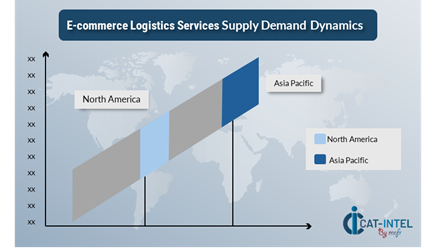
Asia Pacific: Dominance in E-commerce Logistics Services
The Asia Pacific region, particularly countries like China and India, is emerging as a dominant hub for e-commerce logistics services. Several factors contribute to this region's growing prominence:
-
High Production Capacity and Infrastructure: Asia Pacific countries boast expansive industrial zones and significant investments in logistics infrastructure, including ports, warehouses, and transportation networks. -
Technological Integration: Automation and digital advancements in logistics processes are enhancing efficiency in the region, allowing logistics providers to meet growing demand while reducing costs. -
E-commerce and Retail Growth: The rapid growth of e-commerce in Asia, driven by increasing online shopping and the booming middle class, has fuelled demand for robust logistics solutions to support order fulfilment and fast delivery. -
Sustainability Focus: Many logistics providers in the region are increasingly adopting eco-friendly practices, such as electric vehicles for delivery and the use of sustainable packaging materials, to meet both local and global sustainability standards.
Asia Pacific Remains a key hub E Commerce logistics services price drivers Innovation and Growth.
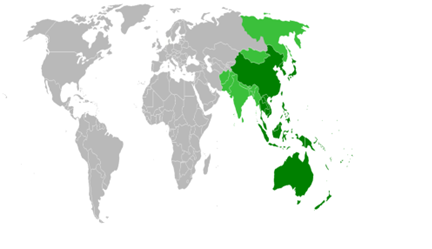
Supplier Landscape: Supplier Negotiations and Strategies
The supplier landscape for e-commerce logistics services is diverse and competitive, comprising a range of global logistics providers, regional experts, and specialized service firms. These suppliers play a crucial role in determining factors like pricing, service quality, delivery speed, and technological innovation. The e-commerce logistics industry includes major logistics companies offering comprehensive global and regional solutions, while smaller, niche players focus on specific services such as last-mile delivery, temperature-controlled shipping, and sustainable packaging solutions.
As e-commerce demand continues to grow, especially due to the rise in online shopping and the increasing need for faster delivery, logistics service providers are enhancing their service offerings, investing in technological advancements, and expanding their network capabilities. The focus on sustainability and cost efficiency is also driving the adoption of eco-friendly logistics solutions and the use of automation in warehousing and transportation.
Key suppliers in the e-commerce logistics services market include:
- DHL Express
- FedEx Corporation
- UPS Inc.
- XPO Logistics
- Maersk Line
- H. Robinson Worldwide, Inc.
- Kuehne + Nagel International AG
- DB Schenker
- China COSCO Shipping Corporation
- Aramex International
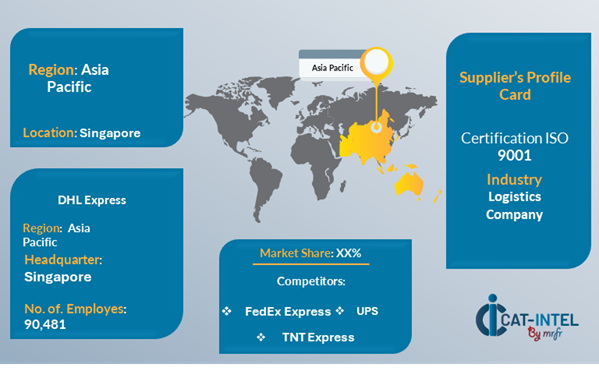
Key Developments Procurement Category Significant Development:
Significant Development |
Description |
Market Growth |
The e-commerce logistics services market is expanding rapidly due to the increasing volume of online shopping, particularly in emerging markets. |
Sustainability Focus |
There is a growing emphasis on environmentally friendly logistics services, with an increasing demand for recyclable packaging, electric vehicles, and carbon-neutral shipping methods. |
Product Innovation |
Logistics companies are innovating by offering faster delivery options, same-day deliveries, and using drones or autonomous vehicles to optimize the supply chain. |
Technological Advancements |
Adoption of advanced technologies such as AI for route optimization, IoT for real-time tracking, and automation in warehouses is improving efficiency and reducing operational costs. |
Global Trade Dynamics |
Changes in international trade policies, customs regulations, and tariffs are influencing the logistics services industry, affecting shipping costs and delivery timelines. |
Customization Trends |
There is an increasing demand for customized logistics services tailored to specific e-commerce business needs, such as flexible delivery windows and personalized packaging. |
|
E Commerce Logistics Services Attribute/Metric |
Details |
Market Sizing |
The global e-commerce logistics services market is projected to reach USD 1,903.08 billion by 2032, growing at a CAGR of approximately 20.04% from 2024 to 2032. |
E Commerce Logistics Services Technology Adoption Rate |
Around 55% of e-commerce logistics companies are adopting advanced technologies like AI, machine learning, and IoT for route optimization and real-time tracking. |
Top E-commerce Logistics Strategies for 2024 |
Key strategies include expanding last-mile delivery capabilities, integrating sustainable practices, and enhancing supply chain automation. |
E-commerce Process Automation |
Approximately 45% of e-commerce logistics providers have implemented automation in warehousing, sorting, and packaging to enhance efficiency and reduce costs. |
Logistics Process Challenges |
Major challenges include managing last-mile delivery costs, meeting consumer expectations for fast delivery, and navigating complex global supply chains. |
Key Suppliers |
Leading players in the e-commerce logistics market include DHL Express (Germany), FedEx (USA), and JD Logistics (China), offering diverse logistics solutions. |
Key Regions Covered |
Prominent regions for e-commerce logistics include North America, Asia-Pacific, and Europe, driven by the growing e-commerce sector and technological advancements. |
Market Drivers and Trends |
Growth is driven by the rise of online shopping, the need for fast and reliable delivery services, advancements in supply chain technology, and growing sustainability concerns. |

